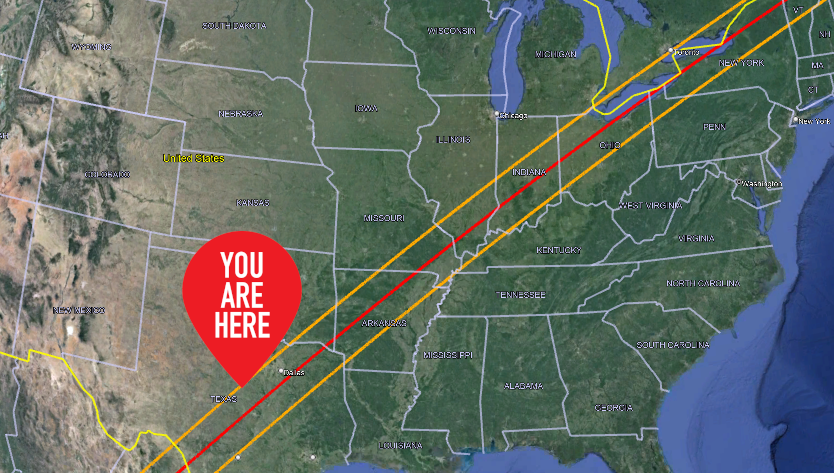Observing a total solar eclipse at the very edge of the umbral shadow path

Map Data © Google Earth 2024, calculatrions of John Irwin)
The progression of the eclipse at the limit of the umbral shadow path is markedly different from the progression of the eclipse near the centerline and very few descriptions about that can be found in the literature.
In the experience that most eclipse chasers, almost always stationed close to the centerline, have of the last minute before second contact is of a rather rapid and accelerating sequence of phenomena – the level of ambient light decreases faster and faster, the lunar shadow materialises more and more noticeably and comes rushing towards the observer, the photospheric crescent shrinks and breaks into rapidly vanishing Baily’s beads, often one last bright point of light shimmers past the lunar edge at the same time as the solar corona fully comes into view and then totality begins. The preceding dramatic and rapid progression of events is followed by the rather calm, albeit spectacular, phase of totality that evolves far more subtly.
From the limit this familiar experience is upended and turned into a rather alien experience. We would like to describe what we saw from observing the 2017 August 21st total solar eclipse from just a few hundred meters inside the southern limit of the umbral shadow path. A couple of minutes before second contact, the progression of the eclipse started diverging from the common picture usually reported by seasoned observers. The ambient light level decreased organically without noticeable acceleration – it was as if the entire sky, almost without noticing, took a deep purplish-blue tinge. Instead of an acceleration of transient phenomena, the exact opposite occurred – a deceleration of transient phenomena. The mad rush of the breaking of the photospheric crescent into rapidly vanishing Baily’s beads that happens over 10-15 s at the centreline got extended to over a minute or more. From our observing site we observed for 30-35 s, with the naked eye and without eclipse glasses, three large Baily’s beads slowly evolve, shrink and vanish on the lead up to second contact. Initially they were as bright as Venus. Then like Jupiter. Then less and less. Two Baily’s beads evolved and vanished at an average rate but the last one lingered on for 10-15 s after the other ones had vanished. During this gentle and subtle evolution of Baily’s beads, the most striking and totally unexpected feature we observed was that the whole corona had already fully come into view. Not just the inner corona but also the outer corona extending out to several solar radii. We were busy setting up the camera so we do not know exactly when the full corona appeared but it was at least 35-40 s before second contact (when we left the camera running by itself and we were just observing). The view of the slowly evolving Baily’s beads on the backdrop of the full solar corona was absolutely mesmerising and enthralling. The last Baily’s bead did not vanished with a bang in a diamond ring effect. It just faded away very slowly. There was no noticeable brightening of the solar corona after the disappearance of the last Baily’s bead. The full corona was just there all along. After around 10-15 s, during which the photosphere was totally extinguished, new Baily’s beads came back into view, more rapidly than the beads which had faded away before second contact. Again, no noticeable change was detectable in the brightness of the corona. After another 10-15 s of unfiltered naked eye observation we averted our gaze and put on eclipse glasses for eye safety.
The very different experience of totality from the edge is due to the peculiar way the lunar and solar limbs are travelling with respect to each other. They stay very close and they move almost tangentially to each other. While on the centreline they travel almost orthogonally.
Read the full story in the article:
Estimation of the Eclipse Solar Radius by Flash Spectrum Video Analysis
https://iopscience.iop.org/article/10.3847/1538-4365/ac1279/meta
